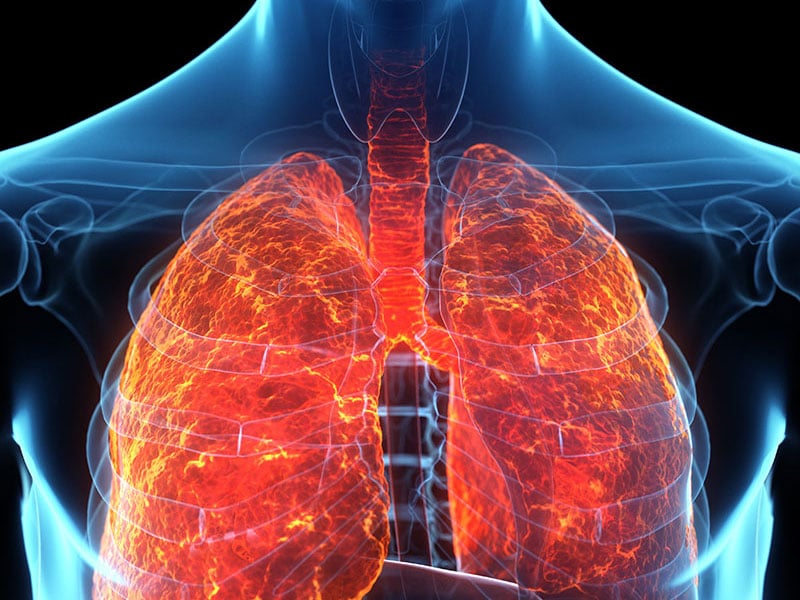What are the health effects of exposure to asbestos?
With asbestos being commonly used in construction for a few decades leading up to 1999, many people wonder why asbestos is such a major concern.
Asbestos was once popular in construction and other industries due to its fireproofing, insulation, and soundproofing qualities. It was also inexpensive and easy to attain, adding to its prevalence.
Asbestos could be used in all sorts of ways to create an array of asbestos-containing materials (ACMs), from cement and vinyl sheeting to paint and adhesives. That means it could be used in practically every area of a building — inside and outside, and from floor to ceiling.
While anyone around airborne asbestos fibres is at risk, there are some individuals and professions that have a higher chance of exposure. Builders, DIY enthusiasts, commercial building dutyholders, and tradesmen all need to be aware of asbestos, including where it’s often found, its risks, and prevention methods.
What is asbestos?
Asbestos is a naturally occurring mineral fibre that’s found in rock and soil. Its heat resistance and strength once made it a popular addition to construction materials and other manufactured goods that required insulation and fire resistance, such as:
- Auto parts
- Ceiling and floor tiles
- Cement
- Fabrics
- Coatings
- Gaskets
- Packaging
- Paper products
- Roofing shingles
There are a few reasons why asbestos was once so commonly used before its health impacts were well-known. For starters, asbestos has a high resistance to chemicals, electricity, heat, and water, which made it an ideal insulator for boilers, engines, generators, ovens, and more.
Second, asbestos is malleable, making it useful as an additive or binder — you could essentially use asbestos in any material you wanted since it was so workable. Lastly, asbestos was inexpensive and widely available, so it became a reasonable go-to in the construction industry.
How can you be exposed to asbestos?
ACMs aren’t dangerous in their normal, complete state. It’s when an ACM is disturbed or damaged that you have to worry about it. When this happens, asbestos fibres are released into the air, and they can then be inhaled or ingested. Asbestos fibres are microscopic and undetectable, without any type of smell or taste, so you don’t always know if they’re present.
ACMs can be disturbed or damaged in a number of ways. For example:
- Normal wear and tear or degradation over time can cause ACMs to break apart.
- A person who doesn’t know asbestos is present could unwittingly damage an ACM, like by drilling into a wall.
- Renovation or demolition projects typically impact or destroy areas where asbestos exists.
While anyone in a building that contains asbestos could potentially damage it, certain roles have a higher likelihood of coming into contact with ACMs. Those include builders and tradesmen, as well as individuals who like tackling DIY projects.
What are the immediate health effects of asbestos exposure?
The first symptom of asbestos exposure is usually shortness of breath. Additional symptoms of asbestosis and asbestos-related diseases may include:
- Chest pain and/or tightness
- Clubbing of the fingertips and toes
- Crackling sound in the lungs when breathing
- Dry, persistent cough
- Loss of appetite and weight loss
- Swollen arms or face
It’s important to understand that there are no short-term side effects of asbestos exposure. That’s what makes asbestos so insidious.
Unless you know that you’re around asbestos fibres, you could breathe them in or swallow them without realizing it, and health implications may not arise for years or decades. Even inhaling large amounts of asbestos fibres won’t cause symptoms right away.
What are the long-term health risks of asbestos exposure?
There are a number of severe and deadly asbestos-related diseases that may occur over time, including asbestosis, lung cancer and other cancers, mesothelioma, and pleural thickening. Typically, asbestos-related diseases don’t have any signs or symptoms for 10 to 40 years.
Asbestosis
Asbestosis is a chronic lung disease that causes inflammation and scarring, resulting from asbestos exposure. It’s considered an interstitial lung disease (ILD), which is described as a disorder that causes progressive lung tissue scarring. While asbestosis isn’t a form of cancer, it can be life-threatening.
Asbestos-related lung cancer
Asbestos-related lung cancer typically occurs after several years of exposure to asbestos fibres. However, it is possible to develop it after just one exposure event. That’s why there’s no such thing as a safe asbestos exposure event — any amount of exposure can be dangerous. Smokers who were exposed to asbestos have a particularly high risk of developing lung cancer.
Mesothelioma
Mesothelioma is a cancer that’s found in the tissue that covers a person’s internal organs. It’s aggressive and deadly, and even with treatment, there is often no cure for mesothelioma. Asbestos exposure is the No. 1 risk factor for mesothelioma.
Pleural thickening
Pleural thickening occurs when scar tissue thickens the lining of the lungs, called pleura. Asbestos exposure is one cause of pleural thickening, and it may also be a symptom of mesothelioma. On its own, though, pleural thickening is not usually life-threatening, though it can decrease lung function.
How does asbestos cause health problems?
Asbestos is considered a carcinogen, which is a substance that’s known to cause cancer.
When an ACM is damaged, asbestos fibres break free and become airborne, making it easy for anyone in the area to inhale or swallow them without knowing it. Asbestos fibres can then get trapped in the lungs and stay there for years.
Over time, those fibres can create inflammation and scarring in the lungs. This can lead to difficulty breathing, along with other, more serious health problems, including different types of cancer.
While no amount of asbestos exposure is safe and any exposure event can lead to health issues, the duration of exposure and the type of asbestos can play a role in the outcome.
There are a few different types of asbestos, and the most dangerous kind is crocidolite asbestos, also known as blue asbestos. What makes this type of asbestos particularly harmful is that its fibres are extra-fine, making them the easiest kind to inhale.
The dose of asbestos exposure, meaning how much is inhaled, may also factor into health effects. In general, the more asbestos a person is exposed to, the higher the risk of developing an asbestos-related disease in the future.
What should you do if you’re exposed to asbestos?
First, if you’re currently in a situation where you’re being exposed to asbestos, like if there are damaged ACMs at your workplace, prevent additional exposure from occurring. Also, since smoking increases the risk of developing asbestos-related diseases, including lung cancer, it’s best to stop smoking if you’ve been exposed to asbestos.
If you think or know you’ve been exposed to asbestos, see your doctor right away. Do this whether the exposure event was recent or in the past. Give as detailed a description as possible, including how long you were exposed for, what type of asbestos you were exposed to, and anything else you know.
Next, discuss follow-ups and screenings with your doctor. You may also want to start seeing a doctor who specialises in asbestos-related diseases. The best chance of surviving a serious asbestos-related disease is early detection and treatment.
It’s also helpful to know the symptoms of asbestos-related diseases so that you can take control of your health. Those include muscle weakness, shortness of breath, swelling of the arms and face, weight loss, and more.
How are asbestos-related diseases diagnosed and treated?
The diagnosis and treatment of an asbestos-related disease will depend on which disease the patient is suffering from.
Asbestosis is often diagnosed by going over an individual’s medical and asbestos exposure history, along with X-rays or CT scans that can show lung scarring. Breathing tests may also be used to determine the effect of asbestos exposure on the lungs.
While asbestosis is irreversible, there are treatments to slow the disease’s progression while relieving the patient’s symptoms and preventing further complications from appearing.
Mesothelioma is diagnosed after a biopsy is done, which removes a small part of the affected tissue so it can be examined. Treatments for mesothelioma may include removing part of the chest wall during surgery, undergoing chemotherapy, or being part of a clinical trial for a new therapy.
Final thoughts about the health effects of asbestos exposure
While asbestos is no longer used in the UK, any buildings that were constructed before 2000 are still likely to contain ACMs. Being educated in asbestos awareness and staying compliant with the Control of Asbestos Regulations 2012 (CAR) is necessary to keep yourself and anyone in or around the building safe.
Builders, DIY enthusiasts, and tradesmen should be especially diligent when working in any building that predates 2000. Knowing how to identify ACMs and wearing personal protective equipment (PPE) are necessary steps to prevent exposure. Additionally, familiarise yourself with the legal requirements and best practices for working with or around asbestos, especially if you’re the dutyholder of a commercial building.
Contact Oracle Solutions today to learn about our asbestos training courses.

Written by Mark Carter
Mark Carter is a renowned expert in asbestos management, offering clients vital guidance on compliance and safety. His expertise is invaluable for navigating asbestos regulations, ensuring both safety and legal adherence. Mark's role is central in providing effective asbestos-related solutions, helping clients achieve their business objectives with an emphasis on regulatory compliance and safety in asbestos management.

